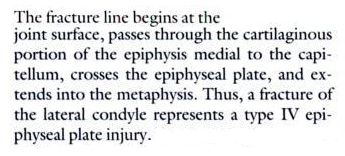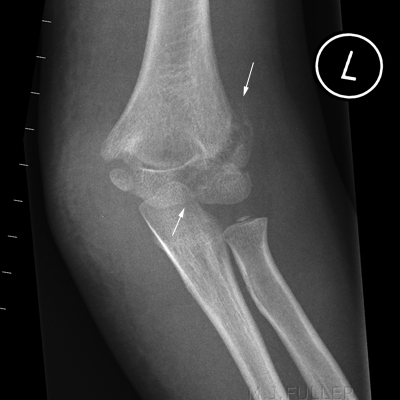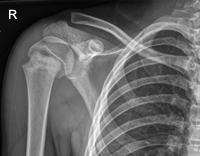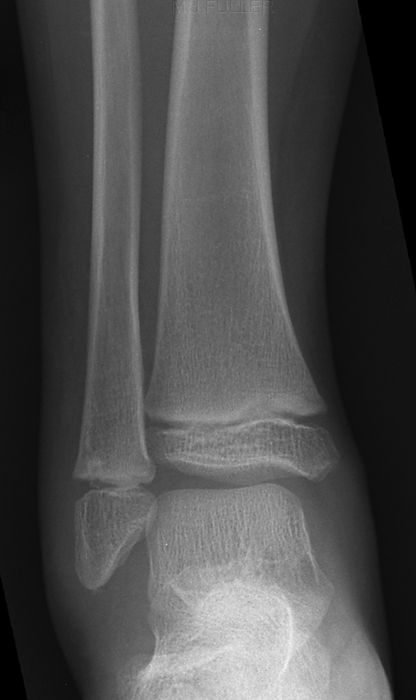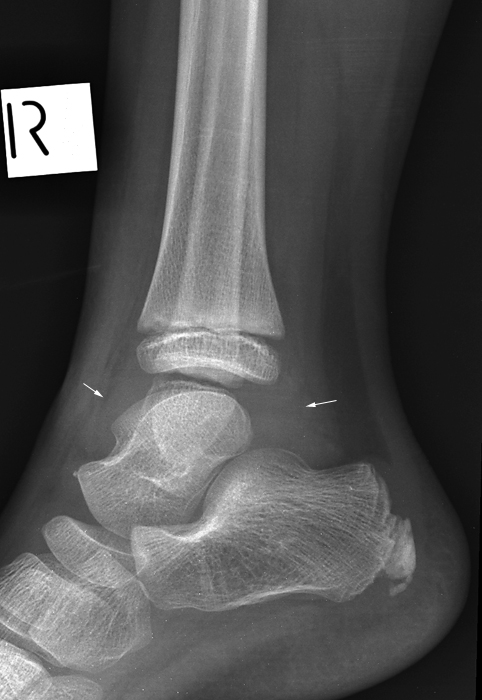Salter-Harris Fractures
</a>
Introduction
It is important for radiographers to be able to identify fractures that involve the growth plate. These fractures can have significant implications for treatment and prognosis. Furthermore, identification of the type of growth plate trauma can have implications for treatment and prognosis. This page examines the Salter-Harris classification of fractures involving the growth plate and the radiographic techniques for demonstrating them
The Salter-Harris Classification

Source: <a class="external" href="http://www.primary-surgery.org/ps/vol2/html/sect0324.html" rel="nofollow" target="_blank">Epiphyseal injuries in children</a>
The Salter-Harris fractures are classified 1 - 5. The higher the classification number, the worse the prognosis. Most Salter Harris injuries do not result in bone growth disturbance. If the epiphyseal plate is injured, the volar portion of the epiphyseal plate closes before the dorsal portion. (Kraemer B.A. and Gilula, L.A., The Traumatised Hand and Wrist, Radiographic and Anatomic Correlation,, 1992, pp165-166).
Long Bone Anatomy
- Diaphysis
- Metaphysis
- physis or epiphyseal plate
- epiphysis
Elbow
Lateral Condyle Fractures
Salter notes that the lateral condyle fractures of the distal humerus are Salter Harris 4 fractures..
<a class="external" href="http://books.google.com.au/books?id=oa6fDFuX-I8C&pg=PA523&lpg=PA523&dq=elbow+condyle+vs+epicondyle&source=bl&ots=lhiHITotg0&sig=YDhHTE7q_t_nQN0pcYGHEr0kFqo&hl=en&ei=wSBPSrS3Loj8sQPOvYWrDQ&sa=X&oi=book_result&ct=result&resnum=7" rel="nofollow" target="_blank">(Robert. Bruce. Salter ,</a>
<a class="external" href="http://books.google.com.au/books?id=oa6fDFuX-I8C&pg=PA523&lpg=PA523&dq=elbow+condyle+vs+epicondyle&source=bl&ots=lhiHITotg0&sig=YDhHTE7q_t_nQN0pcYGHEr0kFqo&hl=en&ei=wSBPSrS3Loj8sQPOvYWrDQ&sa=X&oi=book_result&ct=result&resnum=7" rel="nofollow" target="_blank">Textbook. of Disorders and Injuries of the Musculoskeletal System. 3rd Ed, 1999, p523)</a>
Table of Salter Harris Fractures
Anatomy SH I SH II SH III SH IV SH V Proximal Humerus
Salter-Harris I 'Fractures' of the Distal Fibula
